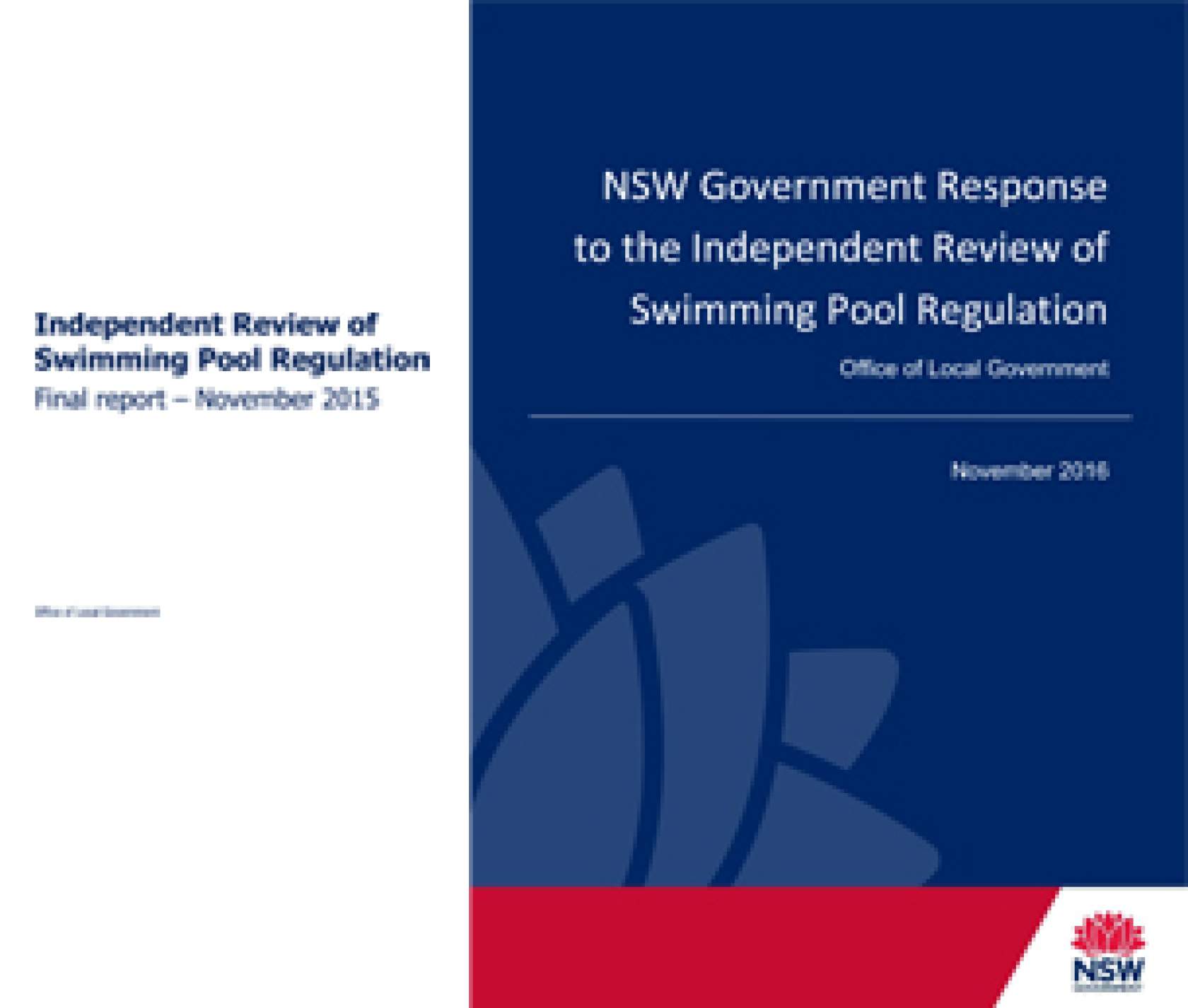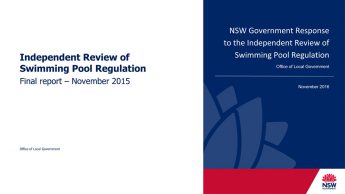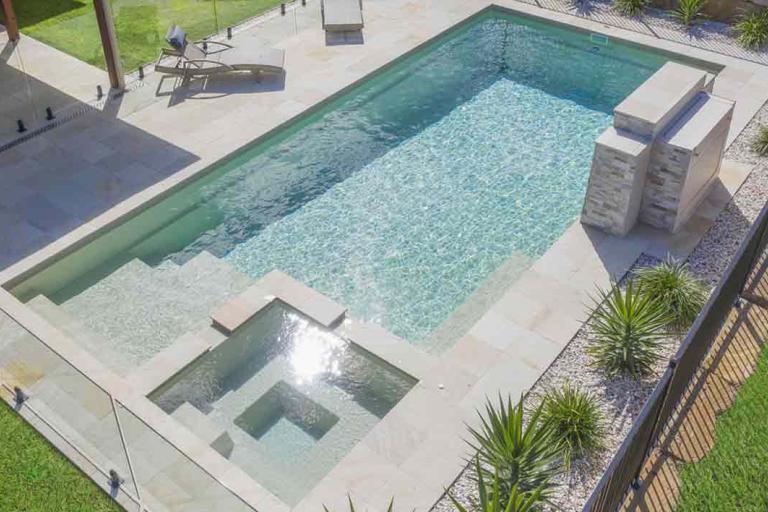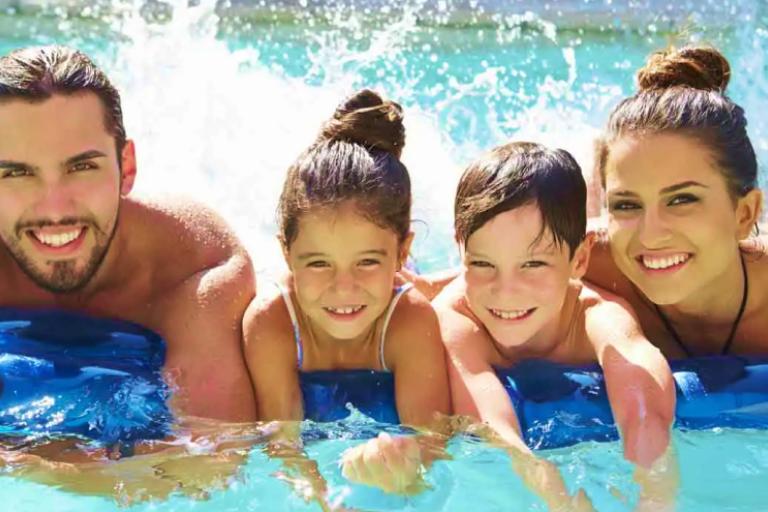Lambert Independent Review of Swimming Pool Regulation released

 The long-awaited Independent Review of Swimming Pool Regulation in New South Wales has been released. It is commonly referred to as the Lambert Review after the report’s author, former secretary of the NSW Treasury, Michael Lambert.
The long-awaited Independent Review of Swimming Pool Regulation in New South Wales has been released. It is commonly referred to as the Lambert Review after the report’s author, former secretary of the NSW Treasury, Michael Lambert.
In responding to the report’s release, the Minister for Local Government Paul Toole says that the review made 62 recommendations that required extensive analysis and careful consideration.
The review identified a number of problems with the current regulatory approach, including the fact that there are complex pool barrier standard requirements which vary according to the date of construction of the pools.
The recommendation to bring all swimming pools under a single standard – rather than retain the existing relevant standards – has not been accepted by the government.
The review also recommends the establishment of a pool safety council and the transfer of responsibility to the minister in charge of building regulation.
The government rejected the recommendation for a pool safety council, instead deciding to merge the functions of NSW Fair Trading and the BPB into a single building regulator: the Building and Construction Services (BCS), which will continue to have input, given their regulatory responsibilities. However they will consider the governance changes during consultation between the Office of Local Government (OLG) and other agencies.
Minister Toole says a financial analysis found that if they were to implement all the recommendations, the cost would be more than $1 billion, equating to between $2000 and $5000 per pool owner. Changing to a single standard is estimated at $201 million.
One recommendation the government has accepted is increased support for the message that active adult supervision of young children is the first line of defence against drowning in backyard pools. This will take the form of a summer advertising blitz about backyard pool safety, organised by Royal Lifesaving NSW.
Summary of recommendations
1. Pool barrier standard: clarify the current pool barrier standard and create clear documentation for pool owners. In time, move to a single standard or a simplified approach to standards.
2. Exemptions: remove the legislative exemptions from the pool barrier requirements and at the same time give greater guidance and support to councils in assessing applications on a case by case basis
3. Portable pools and spas: ensure compliance of portable pools and spas through pre-registration at the point of sale, amend SEPP (Exempt and Complying Developments) to require certification and registration of portable pools and clarify the definition of spa pools.
4. Swimming pool register: revamp the swimming pool register to capture all relevant information, provide useful reporting and act as a communications hub with pool owners.
5. Role, function, training and accountability of certifiers: clarify and document the role and functions of pool certifiers and council pool inspectors. Enhance the training function and approach for pool certification by seeking for it to be recognised by ASQA and establish an audit program to enhance accountability.
6. Pool compliance certification: proceed with an amended sale and lease provision on 29 April 2016. Amendments should include allowing transfer of the compliance certification requirement under certain circumstances from vendor to purchaser, as well as a public awareness campaign. It is also proposed to assess on a cost benefit basis a four yearly inspection program of all private swimming pools based on the approach used in WA. [Some of these recommendations have taken place.]
7. Compliance and enforcement: require certifiers and councils to provide full details of non-compliance and how it can be addressed and make clear the responsibility of certifiers to seek to achieve compliance. Use councils as a last resort, enhance the penalties and establish a simple, timely and affordable appeals mechanism for pool owners.
8. Information, research and education: expand reporting of non-fatal child drownings, with council follow up and require annual reporting by the swimming pool regulator. Operate at both the state and local level awareness and education programs regarding pool safety.
9. Improved governance: transfer responsibility of swimming pool regulation and the Swimming Pools Act 1992 (the Act) to the minister and agency responsible for building regulation and rewrite the Act and regulation to address a range of deficiencies. Establish a Pool Safety Council to advise the Government on pool safety with membership including all key external stakeholders as well as relevant government agencies.
10. Resourcing the function: provide suitable flexibility for councils to undertake their role in swimming pool regulation and education by allowing councils to charge cost recovery fees for pool inspections and the ability to levy rate payers with pools. The NSW Government should explore the use of an annual charge on the swimming pool register to assist in funding its swimming pool regulation costs.
Government response
The NSW Government has said it supports 46 of the report’s 62 recommendations: 15 fully, 17 partly and 14 in principle and proposes responding on two fronts:
1. Vigilant and responsible adult supervision of young children in and around backyard pools at all times is the first line of defence. This will be supported by increased targeted education.
2. A stronger regulatory framework for swimming pool barriers that minimises the risk of child drownings while not imposing a significant net cost on the community.
The government will continue to partner with water safety stakeholders to promote water and swimming pool safety awareness to the community. Key measures include:
1. An enhanced public communications safety campaign to support responsible and vigilant adult supervision of children in and around backyard pools. This campaign would emphasise that supervision is the first barrier and pool fences are a secondary barrier for when supervision inadvertently lapses.
2. Development of options to simplify the standards framework that minimise net costs on the community.
3. An easy-to-understand user guide for swimming pool owners, and guidance material on legislative and regulatory responsibilities for private and council certifiers.
4. Support for a review of the swimming pool barrier certification framework arising from the recommendations of the statutory review of the Building Professionals Act 2005.
5. Implementation of minor regulatory changes to support previous Government reform initiatives.
The 167 page report (+ related documents) is currently being assessed by the industry, with a response expected from SPASA NSW & ACT in due course.
For more information:
To view the Minister for Local Government’s Media Release, click here.
To view the Final Report of the Independent Review of Swimming Pool Regulation,click here.
To view the NSW Government Response to the Independent Review of Swimming Pool Regulation, click here.
To view the independent cost benefit analysis of the Final Report’s recommendations, click here.
To view the Better Regulation Statement, click here.
To view the FAQs, click here.
To view the circular to local councils, click here.
To view the Discussion Paper, click here.
To view the Terms of Reference for the review, click here.




